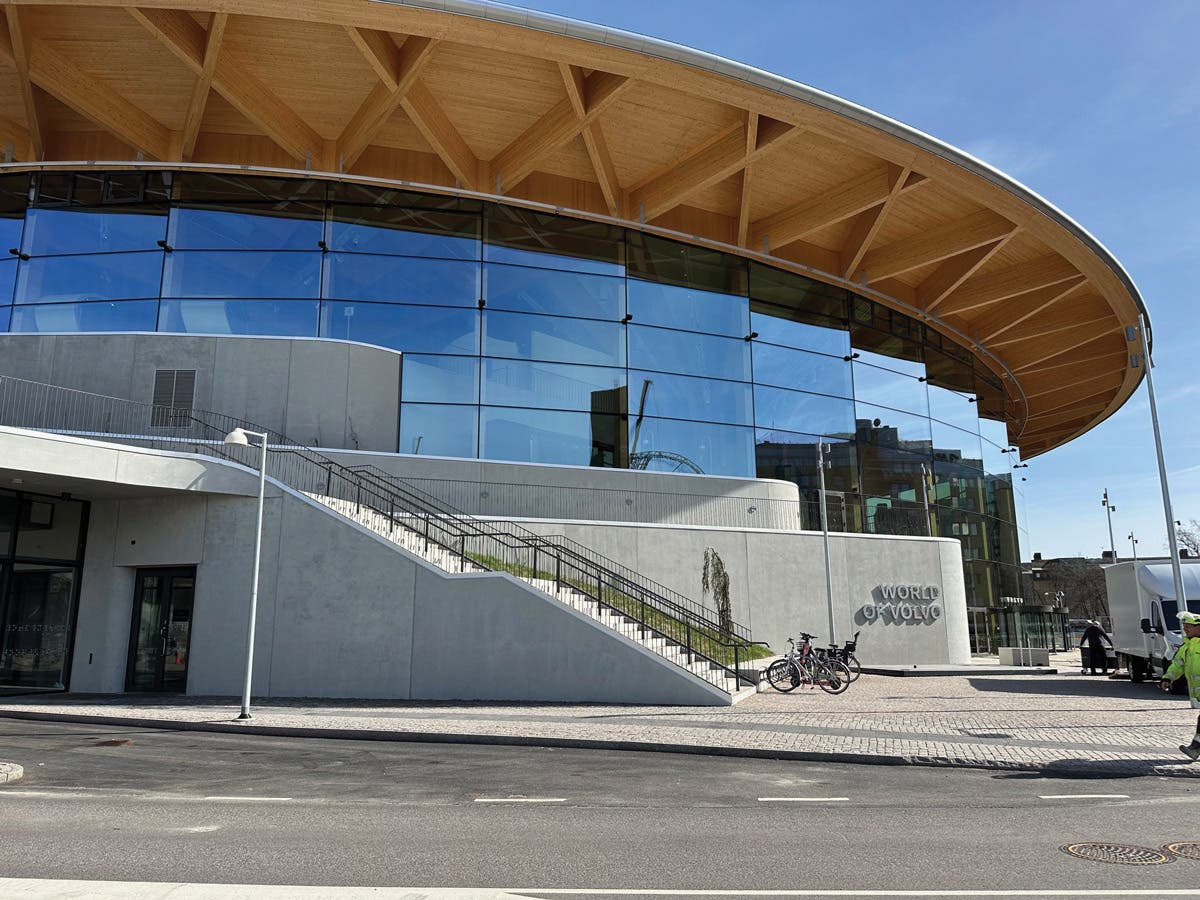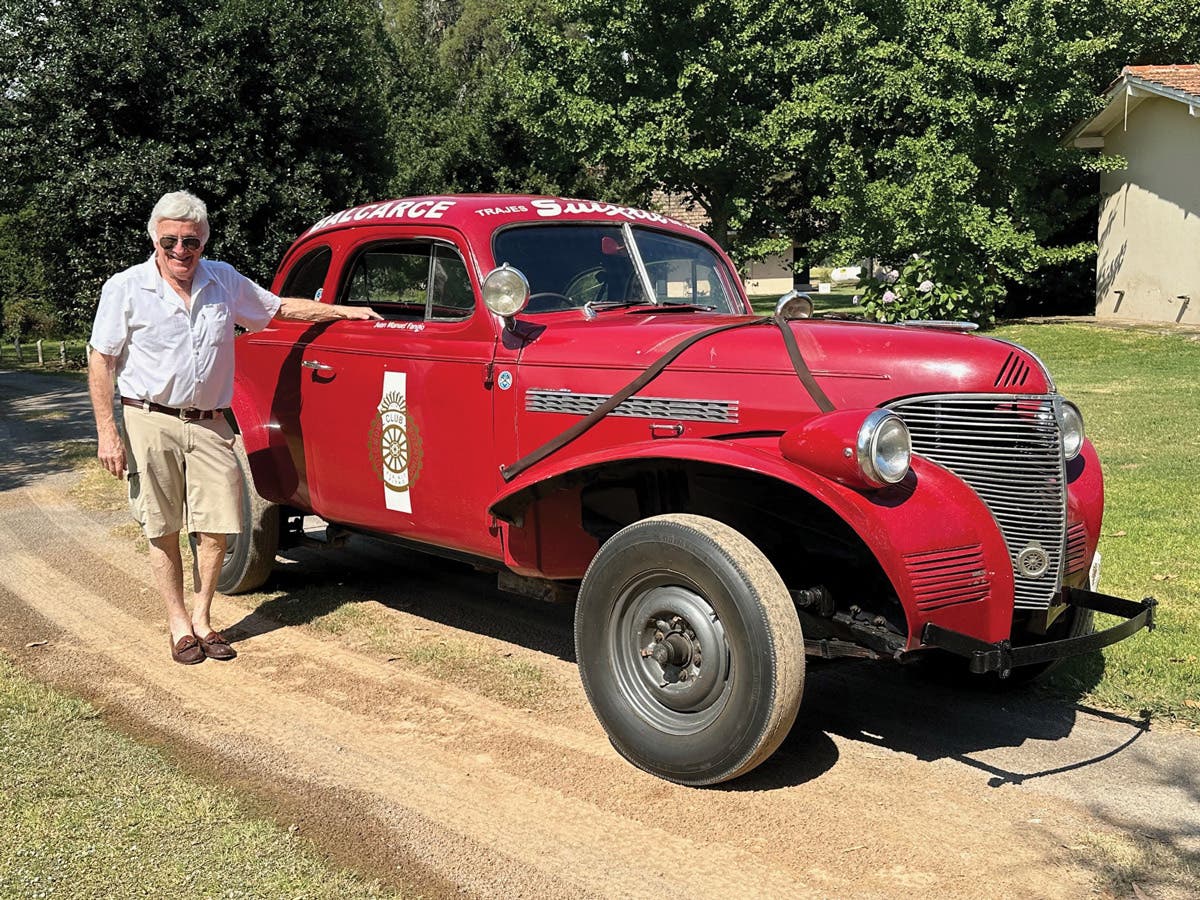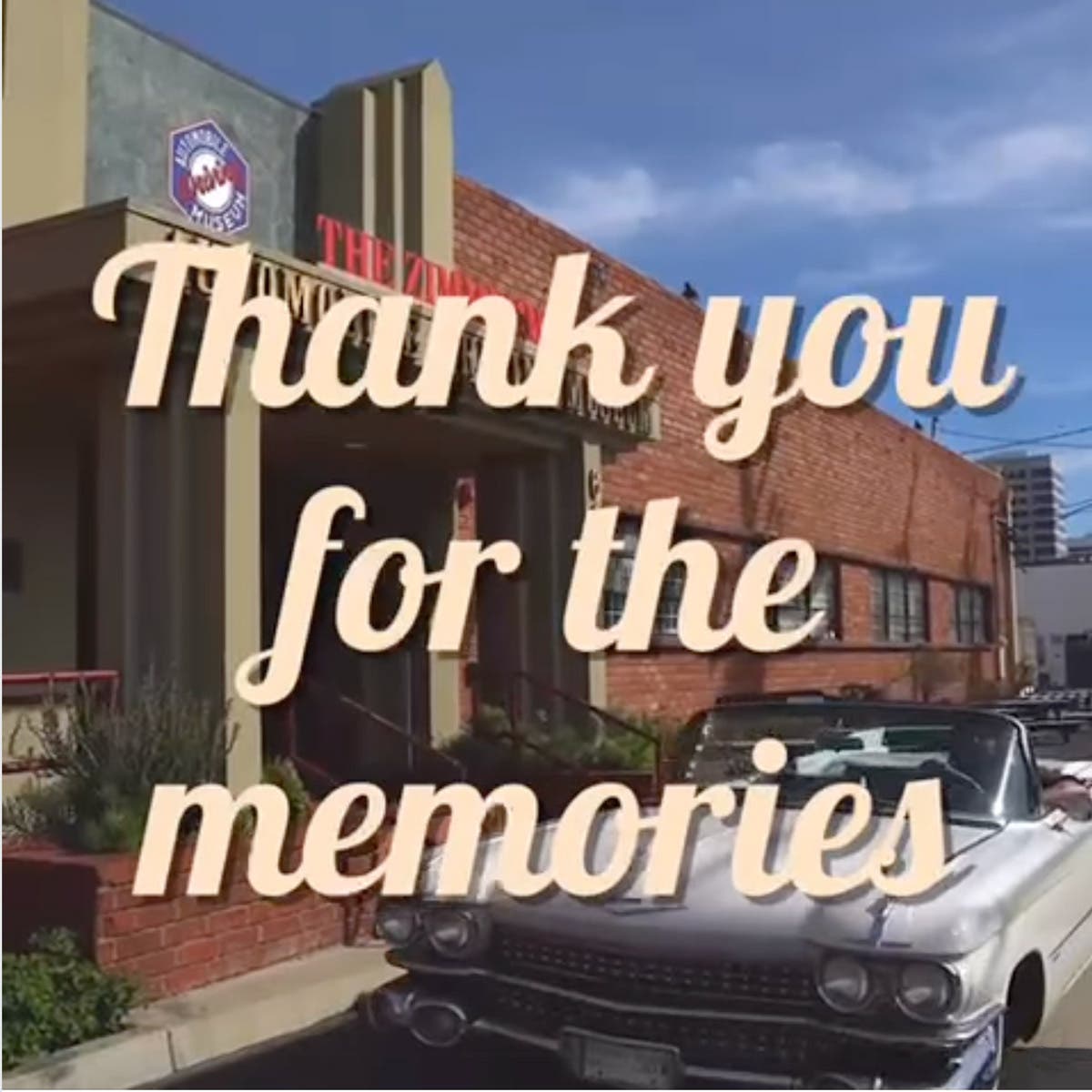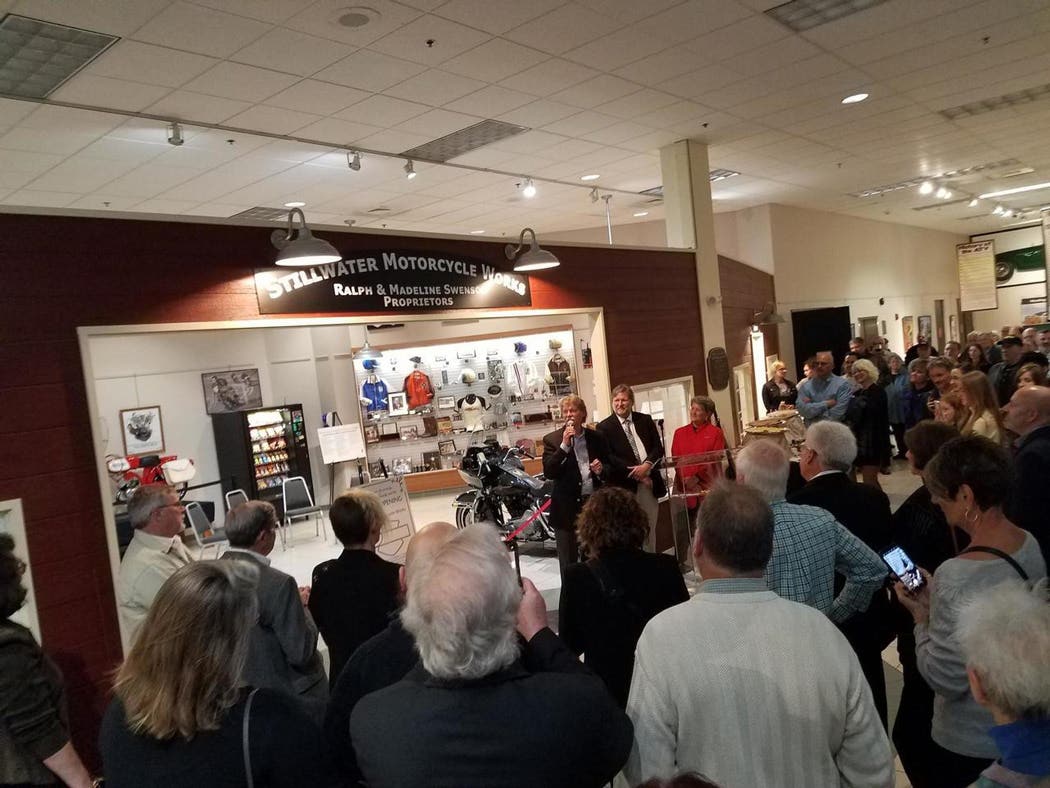ACD Museum’s “Head Honcho” answers our questions
Old Cars sat down with ACDS Museum’s Brandon Anderson to discuss the current status and future of the Auburn Cord Duesenberg Museum.
When Brandon Anderson took over as the executive director and CEO of the Auburn Cord Duesenberg Automobile Museum in the summer of 2018, he was walking into one of the coolest jobs in the collector car hobby. Anderson had worked at several other prominent museums around the country prior to coming to Auburn, Ind., but becoming only the fifth head of one of the nation’s oldest and best car shrines was a pretty significant jump.
Anderson, like almost every other museum leader around the country, has had to navigate a bumpy past 10 months thanks to the COVID-19 pandemic, but the ACD Automobile Museum appears as healthy and vibrant as ever.
Anderson recently stopped long enough for Old Cars’ “10 Questions” treatment.
Old Cars: The past year has been tough for museums — how have you been dealing with the pandemic?
Brandon Anderson: We shut down prior to our state’s mandate in March. In fact, I think we closed two days prior to everybody being forced to close and we stayed closed until June 14 … We have successfully stayed open since June 14 with our normal operating schedule seven days a week and even later hours for private events. As far as visitation, compared to normal, our low point was about 50 percent, and our highest point was right around 75 percent. So we did fare well in comparison to a lot of museums. I have friends in the museum industry and still some museums have not been able to reopen, or they’ve opened and had to shutter again. In Indiana we have had our swings back and forth, but the way our governor handled it, we have been able to reopen and have not had any issues.
We’ve had to make changes, of course. All our interactive things are off — getting inside the cars, and touch screens and touch surfaces, that kind of thing… The good thing is with a building that’s over 110,000 square feet, we have room for ample social distancing and we do a lot of cleaning and sanitizing and things for public safety. Our mask mandate is still in effect, but people have really had no issue with that. By now people are used to it and it’s pretty much standard everywhere you go.
OC: When you came in and took over the job, what were your biggest goals, and some of your biggest challenges?
Brandon Anderson: I started in July 2018 and one of the things I recognized immediately was the great opportunity to take this museum to the next level. We have done excellent at remaining a top-tier museum and I really saw the opportunity for us to explore, interpret and share with the public that we are more than an automotive museum. There is so much more here than the cars.
OC: The museum itself has such a unique history. The building itself is part of the history and the attraction. Can you describe the actual building itself? It’s gotta be a pretty cool place to work.
Brandon Anderson: There is so much to see and talk about in this building. This place was meant to blow you away as soon as you walked in. When you walk in you see the showroom, all the models the dealers would have in their showrooms. It was not open to the public, this was meant for the dealers to visit.
[The building is a] national historic landmark building that was created in 1930 — construction began in 1929 — and it’s one of the great examples of Art Deco architecture in the Midwest and the country. It’s so unique in that we are the only automotive museum in the world that is still in the original company headquarters. This was the original company building, and it’s still where the magic happens.
We are the only [national historic landmark] in northeast Indian, and what that means is the Secretary of the Interior determined that this building and its history is important to every single citizen of the Untied States.
We don’t fabricate the history here. Every day, you walk through it. You climb the same staircase that E.L. Cord climbed. At the end of the day, when I go home, I try to make sure I go through the grand showroom on my way out. It’s invigorating.
OC: Most of the cars are owned by the museum – a large number of Classic, expensive cars. How was the museum able to acquire so many cars over the years?
Brandon Anderson: The fact is that we own 116 vehicles and two airplanes! … Why does this museum own airplanes ? That’s an area we are moving forward in so we can fully interpret the E.L. Cord story and Cord Corp … Cord Corp. had over 100 companies that were held by Cord and they also owned Stinson Airplanes. So we are restoring a 1931 Stinson that was originally owned by the Auburn Automobile Co. We also own a Stinson Gullwing that will go on display at the museum.
Back when we opened in 1974, we didn’t have any cars. We had 24 cars that were on loan, and now here we are 47 years later and we have 116 cars that we own. I think being a premier museum over the years, car owners wanted to be connected to it and realized over time that the cars were home here and so they donated them. We worked on some deals with owners for some very significant vehicles. It’s really the public that owns these vehicles. We’re a public trust, so it’s the public that owns them. We interpret these vehicles for the public and are the caretakers, and many people appreciate that and understand that the museum is equipped to do that and take care of these vehicles into perpetuity.
OC: Cars can deteriorate and suffer a lot of hidden problems when they are static and sitting for too long. How often do you try to run the cars and maintain them?
Brandon Anderson: We’re a small non-profit with a staff of 11 full-time employees, but we have an all-volunteer pit crew and they work together to take care of all the cars. They have a priority list and their goal is to take care of them, getting them all up on the lift and keep them in proper running condition. We don’t drain the oil, so they are not dry, but we take the flammables out of them for safety reasons. So they don’t have gas in them.
We have about six to 10 vehicles that we take out every year, for shows and other kinds of appearances. So our guys have a list of cars that they need to get ready to run that go out every year.
OC: You’re known for ACD cars, but what other vehicles in your collection might surprise people?
Brandon Anderson: We collect vehicles that were from the same time period that were competitors of the Auburns and Cords and Duesenbergs, and then significant Full Classics and vehicles that made automotive history in one way or another. For example, we have a 2002 Ford Thunderbird that has double-digit miles that was donated right after being purchased. It was the first redesigned Thunderbird available to the public at that time. The person who purchased it donated it right away to the museum. It still has plastic on it and window stickers. It complements our 1956 Ford Thunderbird.
But we have a lot of other interesting makes. There were no less than a dozen automobile companies here in Auburn. One of them is the Zimmerman — we currently have four Zimmermans. We have Stutz, Studebaker, Stearns-Knight. We’re very fortunate to have a Ruxton … We’ve got Rolls-Royce, Pierce- Arrow, Packard. We’ve got a Sunbeam Tiger. There is a [1948] Tasco, which is the only one that exists, a Buehrig. We’ve got an 1899 Waverly Electric. An Imp, which is another one built here in Auburn. Locomobile, Marmon, McIntyre … a lot of them were made right here. We’ve got a Checker cab — we’ve just got a little bit of everything!
OC: What are your biggest events during the year?
Brandon Anderson: Obviously there is the ACD Festival that has been happening every year even prior to the establishment of this museum. It’s still one of the largest classic car festivals in the country. Unfortunately, it was cancelled last year, but we are planning to have another very large, wonderful festival this year. That’s when we get 100,000 visitors here in Auburn and the museum is the center for what happens in this town that week…. We just have so many events during the week.
During the rest of the year we have cars and coffee, drive-in movies — “Duesies and Movies.” Those are all free to the public and right here in our plaza. And we have car side chats and presentations throughout the year at the museum.
But if anybody asks when is the best time to see the museum, it’s definitely during the ACD Festival.
OC: What are your newest vehicles and/or exhibits?
Brandon Anderson: “Duesenberg: Evolution of American’s Finest Motorcar.” We’ve got Duesenberg No. 1 and we’ve got three of the four existing Models Xes. It’s got the only Model Y prototype. It’s got one of the first Model Js on display. We’ve got an engine and chassis …
Then another exhibit that opened in June called “Out of Quarantine” has 17 vehicles from the museum’s collection that have never been displayed together ... And we’ve got the two airplanes being restored. Those will be on display when they are done. In December we just got our second Model X in. It’s a dual-cowl phaeton that was donated… And we have a new E.L. Cord Gallery that is under design right now that will tell the whole story of Cord and his company. We are always creating new programs and events and exhibits for people. When people come back to see us, we want them to see something new.
OC: How have you addressed the changing trends in the hobby, or trends in the museum business?
Brandon Anderson: Definitely participatory things. For example, we decided to have a Father’s Day Classic Car Cruise and we took out three of our vehicles and had three volunteers come and bring their Auburns as well. We thought what we’d do is have a suggested donation, and then we’d let people get in the cars and we’d take them for a ride. ‘We’ll take a drive out to E.L. Cord’s house out on North Main Street and then back — about a 15-minute ride.’ We thought this would be really cool and it’s on Father’s Day weekend and we’d start around 2 o’clock and finish around 5. Well, my gosh, we thought we’d be doing good if we got about 20 people, but we got over 300 people to come out! Everybody who was in line got a ride and we were still giving rides at 7 o’clock!
You know, our No. 1 goal is to keep the cars safe. But in a safe way, we want to provide ways for people to engage with these cars rather than just look at them. Until you hear a Model J start up, you don’t know what you’re missing. It is exhilarating! No other car sounds like that! … We want people to have the touch, smell, feel. Hopefully it starts back up after COVID.
OC: If you could take any car in the museum out for a day and drive it around, which one are you taking?
Brandon Anderson: The Duesenberg Model X speedster — no doubt about it! That is a fantastic car to drive. That Duesenberg engine with that lightweight boattail body, it just begs to be driven. And there is no other car like it — it’s the only one! It’s exhilarating to drive. We take care of the vehicles, of course, and don’t race them or anything, but just a leisurely drive down the street is amazing. Just so smooth, fine and sexy.
*As an Amazon Associate, Old Cars earns from qualifying purchases.








